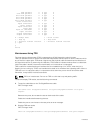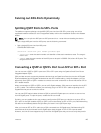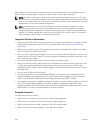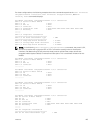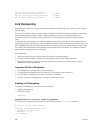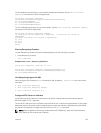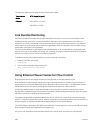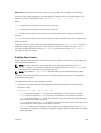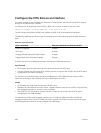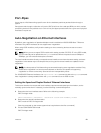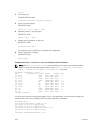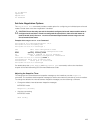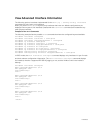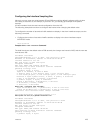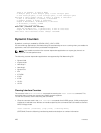
Configure the MTU Size on an Interface
If a packet includes a Layer 2 header, the difference in bytes between the link MTU and IP MTU must be
enough to include the Layer 2 header.
For example, for VLAN packets, if the IP MTU is 1400, the Link MTU must be no less than 1422:
1400-byte IP MTU + 22-byte VLAN Tag = 1422-byte link MTU
The MTU range is from 592 to 12000, with a default of 1500. IP MTU automatically configures.
The following table lists the various Layer 2 overheads found in Dell Networking OS and the number of
bytes.
Table 32. Layer 2 Overhead
Layer 2 Overhead Difference Between Link MTU and IP MTU
Ethernet (untagged) 18 bytes
VLAN Tag 22 bytes
Untagged Packet with VLAN-Stack Header 22 bytes
Tagged Packet with VLAN-Stack Header 26 bytes
Link MTU and IP MTU considerations for port channels and VLANs are as follows.
Port Channels:
• All members must have the same link MTU value and the same IP MTU value.
• The port channel link MTU and IP MTU must be less than or equal to the link MTU and IP MTU values
configured on the channel members.
For example, if the members have a link MTU of 2100 and an IP MTU 2000, the port channel’s MTU
values cannot be higher than 2100 for link MTU or 2000 bytes for IP MTU.
VLANs:
• All members of a VLAN must have the same IP MTU value.
• Members can have different Link MTU values. Tagged members must have a link MTU 4–bytes higher
than untagged members to account for the packet tag.
• The VLAN link MTU and IP MTU must be less than or equal to the link MTU and IP MTU values
configured on the VLAN members.
For example, the VLAN contains tagged members with Link MTU of 1522 and IP MTU of 1500 and
untagged members with Link MTU of 1518 and IP MTU of 1500. The VLAN’s Link MTU cannot be higher
than 1518 bytes and its IP MTU cannot be higher than 1500 bytes.
420
Interfaces



